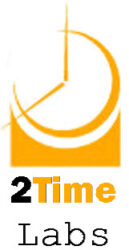 I remember when I finally figured out that “setting priorities” has a funny way of becoming nothing more than window dressing.
I remember when I finally figured out that “setting priorities” has a funny way of becoming nothing more than window dressing.
I had a job in an engineering organization that used an elaborate system of priorities to figure out who should get the highest raise each year. The joke was that once the elaborate engineering was done, the managers would go in and manually adjust the outputs to make sure they made sense, because the process would inevitably produce anomalies that made no sense whatsoever.
In essence, the system of priorities was just a justification used to make their gut feelings appear to be logical.
I have quite recently come across some elaborate systems for prioritizing To-Do lists. As readers of the blog might know, I have included the practice of Listing as one of the fundamentals of a time management system. I have also laid out different levels at which Listing is practiced, from white belt to green belt.
At the highest level described – a green belt – there is not such thing as a generic to-do list, as the schedule takes over the job of helping a user decide what to work on next from the To-Do list. What happens to most users is that their list becomes incapable of handling the number of time demands that they must confront, and their reaction is to attempt some kind of prioritization in order to not to have to deal with all 100 items at once.
So, instead of 100 items, they only need to focus on 10 — the ones with the highest priority.
For some, this approach is sufficient.
For many, however, this approach falls apart quickly.
Here is a typical example (broken down into steps) of what happens when a user has no schedule, and simply a long To-Do list, illustrating where the breakdown occurs:
Step 1 — user makes list and sets up a priority system to focus on the top 10 items
Step 2 — without a schedule, the user has a poor idea of when the 10th item will be finished
Step 3 — long before the 10th item is begun, circumstances change, and several lower ranked items (let’s say the 47th and 75th) need to be moved up to the top 10
Step 4 — the prioties must be changed and 2 items from the top 10 are replaced in the top 10 list
Step 5 — because the user has no written schedule, the items inevitably take longer than they had imagined, and when they review their mental time estimates they discover that even more items are now due and need to be assigned higher priorities because the due dates are now approaching
Step 6 — they change the priorities once again, and while they are changing them, their boss comes in with a new project which forces them to start all over from the beginning
The overall result is a little like shuffling deck chairs on the Titanic. For many users, their system of prioritization simply can’t keep up with the changes in their situation. The problem is that from minute to minute, items’ “priority ranking” changes, as life’s circumstances take their toll, and there is just no way to keep up.
Instead, the solution that many users at higher belts find is quite simple.
Step 1: Items are placed in a flexible schedule that is adjusted as circumstances change.
That’s it. There may be 50 changes in a single day, as items are moved from one time slot to another, and between days, weeks and months. Each scheduled item takes up a time slot whose size corresponds to the amount of time it’s expected to take.
Purists might argue that the advanced user is still prioritizing.
This is where a key distinction is necessary. When use the verb “prioritize” I mean to denote the activity that occurs when someone sits down and assigns a ranking to individual time demands.
That is the physical activity that has no place in most time management systems.
However, I DON’T take it to mean the activity of placing greater importance on one item over another as a decision is being made about when to start and end the work on that item. That activity can be taken to be just another attribute of the item that is included in the user’s decision on the start and end times.
If they reschedule the activity, then its importance is taken into account once again at that point. Just before they commence working on the item, they may want to ask themselves the question again. (Here I am actually describing what happens when a user switches from one activity to another, a practice that’s called Switching in 2Time.)
The strength of the green belt’s system lies in the fact that they have removed a step (assigning a priority) while allowing the circumstances of the moment to influence their choice about what they should do at any and all points in the future. Because they are working from a written versus a mental schedule, and are using it as a flexible planning guide, they find it easy to shuffle items around whenever the need arises.
They don’t get caught up in whether the item they have scheduled is a “1, 2 or 3,” “A, B or C” or “Red, Yellow or Green.”
All that stuff is for them, a made-up and unnecessary construct, that gets in the way of their productivity.
This is not to say that a yellow belt should not use a prioritized to-do list. That may work perfectly for their habit patterns and level of time demands.
However, a green belt has no need for priorities because their time management system helps them to switch from task to task without the extra time and effort needed to prioritize their to-do lists.





